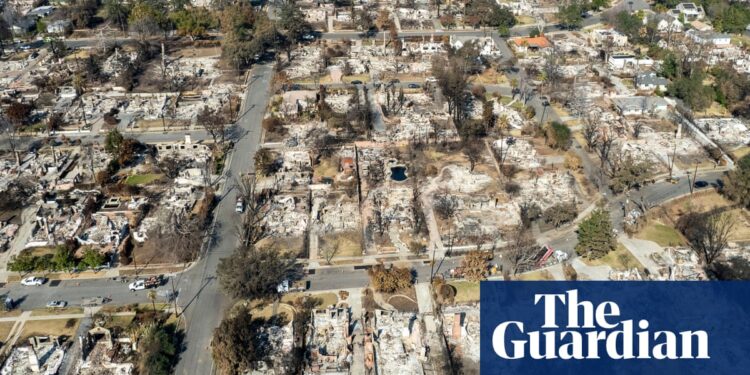Nearly half of Black households in Altadena were destroyed or majorly damaged by the Eaton Canyon wildfire, according to new estimates by researchers at the University of California, Los Angeles.
Altadena has been a center of Black homeownership in Los Angeles for decades, and residents fear that January’s wildfire, which turned blocks of homes and businesses into rubble, could erase a once-thriving community that has nurtured Black artists, activists and writers, from Sidney Poitier to Octavia Butler.
The UCLA researchers found that 61% of Altadena’s Black households were located within the Eaton fire perimeter, and that the blaze had a disproportionate impact on Black residents. Though the blaze took a heavy toll across the diverse community, 48% of Black households were destroyed or majorly damaged in the fire, compared with 37% of non-Black households.
Local residents and activists said the new estimates showing the extent of the wildfire’s impact on Black Altadena came as no surprise.
“There’s nobody I know in the area who wasn’t affected,” said Dr Melina Adbullah, co-founder of Black Lives Matter Los Angeles. “Not everybody’s home burned down, but the number of people who were displaced is really everyone.”
Brandon Lamar, the president of the local branch of the NAACP, said he wanted to see more specific commitments from lawmakers about helping to preserve Altadena as a historic Black community.
In past years, Altadena’s Black residents have had nearly double the homeownership rates of Black Americans across the Los Angeles county area – making the town a potential success story in efforts to shrink the racial wealth gap.
The fires put that legacy at risk, Lamar said.
“One of the biggest easy to pass down generational wealth is through real estate,” Lamar said. “For a large portion of Altadena, that is actually gone.”
The Eaton Canyon fire destroyed more than 9,400 structures across Altadena and neighbouring Pasadena and Sierra Madre, while leaving 17 people dead, according to the California department of forestry and fire protection. Today, about 18% of Altadena’s total households are Black, 20% are Latino, 7% are Asian American and 49% are white, according to census data analyzed by the UCLA researchers.
The clustering of Black households within the west Altadena neighborhood particularly damaged by the fire was no accident, but the result of racially discriminatory practices dating back to the 1930s, said Lorrie Frasure, the director of UCLA’s Ralph J Bunche Center for African American Studies, and one of the lead researchers on the study.
“The legacy of redlining resulted in a long-term concentration of Black residents to those parts of Altadena that were closest to the Eaton fire perimeter,” she said.
The UCLA study highlighted several demographic factors that may make Altadena’s recovery more challenging, for Black residents in particular, as well as for the community overall. First, many of Altadena’s Black homeowners overall are elderly: 57% of them are over 65, which may make them “especially vulnerable to incomplete or insufficient insurance coverage or predatory financial scams as they navigate the process of rebuilding”, the UCLA researchers found.
In addition, roughly 80% of Altadena’s homeowners, both Black and non-Black, are still paying off their mortgages, the researchers found. All of the residents whose homes were destroyed “are in a similar boat: they’re still responsible to the banks for these mortgages”, Frasure said.
Lamar, the local NAACP president, said that while the California governor, Gavin Newsom, worked with lenders to provide 90 days of mortgage payments relief in areas affected by the fires, advocates are pushing for a much more substantial 12 to 18 month mortgage loan deferment, along with a property tax freeze, to give people who have been displaced from their homes more resources to repair or rebuild.
“It’s not a one-size-fits-all for recovery,” Frasure, the UCLA researcher, said. “Understanding the demographics around age, around income, and understanding the historical legacy of this community – it can help us speak to the policymakers.”






